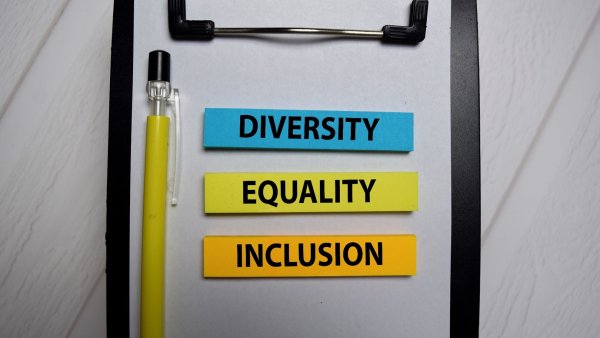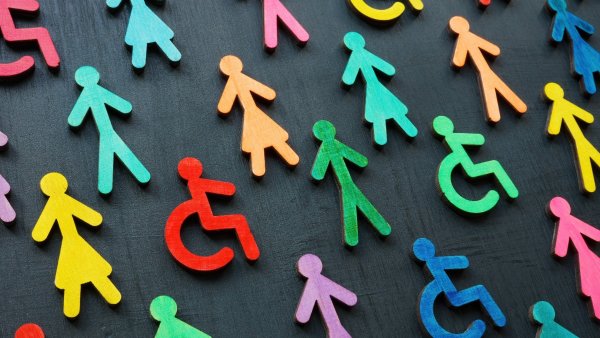
OHR Strategic Plan
In 2023, the Office of Human Resources (OHR) continued efforts toward our OHR Strategic Plan, a multi-year effort and cornerstone plan built from our organizational values that informs decision making while also remaining agile for the changing needs of our customers.
OHR’s value statement is that we are the People who build the Partners to drive the Progress for NIH.
Last year, OHR leaders determined from 2022 working group data that the two trans-OHR key initiatives would focus on the following:
- Diversity, Equity, Inclusion, and Accessibility (DEIA)
- Future of Work (FOW).
Both initiatives were supported by employee-led working groups that identified project goals and executed on Key Performance Indicators (KPIs). Both workgroups presented their research findings and projects to Senior Leaders.
Future goals include a 2024 pilot as well as empowering divisions and offices by encouraging them to develop and implement one solution for their office-specific DEIA needs, also based on 2022 DEIA results and assessments.
OCS

Robotic Process Automation (RPA)
Robotic Process Automation (RPA) uses software robots to emulate human interactions to perform repetitive and tedious tasks and facilitate connections between disjointed systems. The use of RPA in the Office of Human Resources continued to be effective in reducing manual data entry, increasing processing speed, and reducing risk of errors in 2023. OHR’s BOTs processed over 11,850 Non-Ratings-Based Awards and 15,900 PMAP ratings, saving 60 hours of time and resulting in a 92% gain in productivity.
HR SAID

Organizational Health Metrics
As part of our Strategy for a Data Culture, the Office of Human Resources (OHR) is always looking for opportunities to leverage data to improve as an organization. Early in 2023, OHR set out to gather data from across our divisions to assess Organizational Health. After many working sessions with Leadership and program owners, a Framework was developed that adapted the Organizational Health guidance published by the Office of Management and Budget (OMB) to align with OHR’s Strategy. This Framework combines results from several key metrics, providing multiple ways for leadership to assess areas such as Quality of Hire, Professional Growth, Retention, Engagement, Resource Management, and more.
The Organizational Health Metrics Tool will be available in 2024 and will offer OHR leadership the ability to review and explore relevant data through interactive pages using innovative business intelligence capabilities.
OCS

Diversity, Equity, Inclusion, and Accessibility | NIH-Wide Focus
The Office of Human Resources (OHR) continued to support NIH-wide Diversity, Equity, Inclusion and Accessibility (DEIA) efforts through involvement in the development and implementation of the NIH-wide Strategic Plan for DEIA. OHR created new online resources to help NIH employees considering a name change – legal or preferred – and initiated the creation of an awards tracking database to ensure employees are nominated equitably as well as revamping the NIH Director’s Awards with new equity-focused categories. OHR continued efforts to ensure equity in pay for Title 42 scientists included changing Spring increase averages to allow more flexibility to increase pay, providing additional data so committee members have more context for decision making, and developing a tool to identify and share challenges related to pay.
All Divisions

Diversity, Equity, Inclusion, and Accessibility | OHR-Wide Focus
In support of our People value, the Office of Human Resources continued its goal of ensuring the organization is an exemplar leader in diversity and inclusion practices. For starters, the OHR Strategic Plan Working Group for Diversity, Equity, Inclusion, and Accessibility (DEIA) was charged with identifying, documenting, and sharing best practices to ensure events and meetings offer quality accessibility to all participants. Additionally, OHR hosted a special OHR Director’s Seminar Series around its commitment to DEIA goals with six different deep dives into crucial topics of diversity, equity, inclusion, and accessibility as they pertain to HR professionals and our work supporting each other and our customers. In addition to the working group efforts as well as the seminars, OHR also added several trainings on DEIA-related topics to encourage ongoing learning and awareness to best serve our Partners.
All Divisions

Federal Cyber Rotational Workforce Program Implementation
The Government-wide Federal Rotational Cyber Workforce Program provides opportunities for employees performing information technology (IT), cybersecurity, and cyber-related functions to apply for and serve in rotational assignments (or details) at agencies outside of their home agency. OHR’s Client Services Division (CSD) was one of the first human resources teams to create a recruitment program, which was used as a best practice for other federal agencies.
CSD

HR Systems, Analytics, and Information Division Technology Enhancements
In 2023, the HR Systems, Analytics, and Information Division (HRSAID) continued to partner across the Office of Human Resources (OHR) and delivered multiple solutions ranging from automations to infrastructure changes for improved services. A few examples include:
- the EHCM SF-75 Part II Automation saving an estimated 40 minutes of data entry per request;
- the OHR Websites platform changes to improve accessibility, security measures, and compliance with the U.S. Web Design System (USWDS) and 21st Century IDEA; and, the increase of data sets by 27% of the OHR Data Hub.
HR SAID

Data Strategy
The Office of Communication and Strategy (OCS) developed the OHR Strategy for a Data Culture to transform the organization into one that embraces data-driven decision making and leverages data to enhance effectiveness. The strategy included a comprehensive road map outlining key steps and milestones to achieve this transformation. A few successes include the establishment of the OHR Data Bootcamp training program to enhance data literacy for OHR staff, the launch of the Data Community of Practice to facilitate cross-OHR communication and engagement on data-related topics/efforts, and the development of the OHR Data Literacy Journey Map with accompanying video to guide staff as analytic and data literacy skillsets develop. Future plans consist of developing new tools and resources to increase staff understanding and usage, and to enhance customer access to HR data.
OCS
